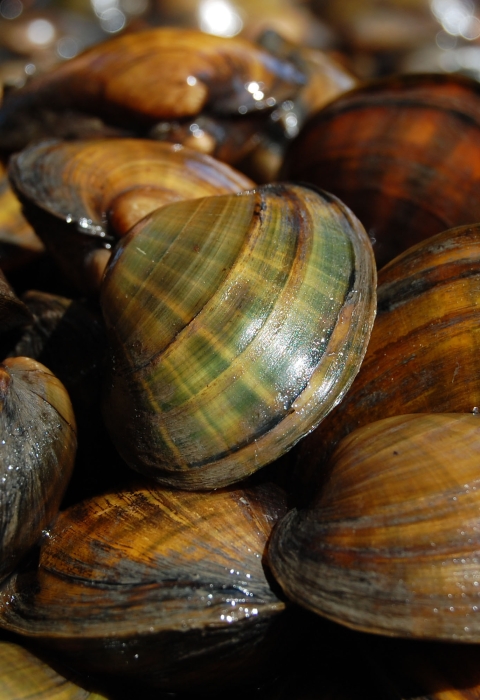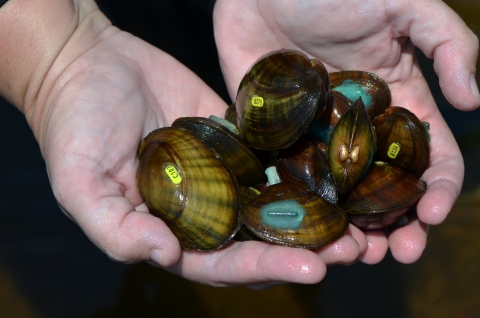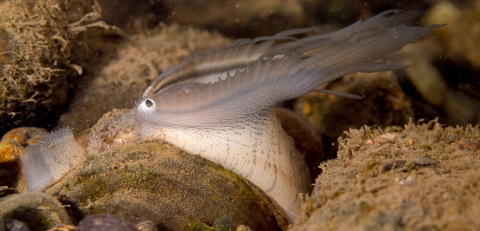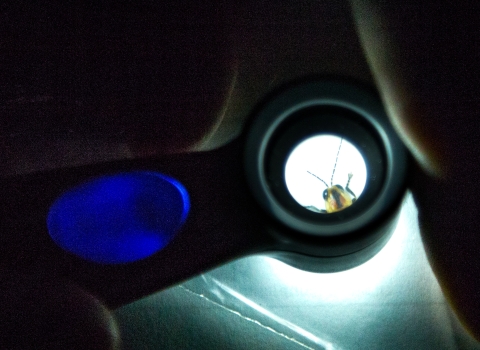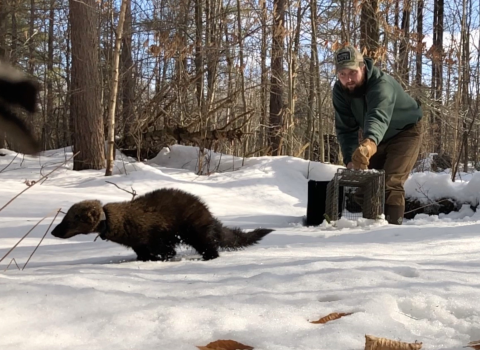Did you know that a single freshwater mussel can pump and filter between 8 and 15 gallons of water per day? That’s right! Freshwater mussels are some of the most powerful filters we have in our watersheds, and they drastically improve the water quality in their environments. Talk about ecological superheroes!
Unfortunately, due to increasing pollution, infrastructure development, and the historical overharvesting of freshwater mussels for the opalescent button industry in the early 1900s, the populations of these magnificent bivalves are at an all-time low. According to the Minnesota Department of Natural Resources, “in Minnesota, 28 of our 51 native mussel species are listed as endangered, threatened, or of special concern.”
These curious filtering creatures struck the interest of environmental educator, Anna Sverclova, after a visit with Cristina Dahl, Outreach Specialist, and the crew of fish scientists at the La Crosse Fish Health Center. There, the education team learned a lot of interesting history and science behind freshwater mussels. They were inspired to speak with both Cristina and Nick Utrup, a mussel biologist at the Minnesota-Wisconsin Ecological Services Field Office, to help spread some little-known information about the lives of freshwater mussels here in the Upper Midwest!
Read along to learn more about mussels of the Midwest!
What’s your favorite “fun fact” about mussels?
Cristina: From the outside you might not think that freshwater mussels are quite that interesting, but they have an incredibly fascinating life history.
Nick: My favorite fact about mussels is how they are all connected to fish and salamanders.
Cristina: The mantle of freshwater mussels has evolved to look like something a fish would eat. Sometimes it looks like a fish, worm, snail, or even crayfish.
Nick: Each mussel has a "host fish" or "host salamander" that is specially designed to aid in mussel reproduction and dispersal. Many mussels have a unique lure that they use to attract a certain fish or salamander (...)
Cristina: Once they lure a hungry fish in and trick it into taking a bite, they release juvenile mussels called glochidia. These tiny, Pacman looking mussels will attach to the fish’s gills or even body and get a free ride from the fish.
Nick: These glochidia then grow and drop off when they mature. This is how mussels can move long distances in the river, they need gills to transform into mussels and disperse to new habitats!
Why are mussels important? What role do they serve in an aquatic ecosystem?
Nick: Mussels are important to MN Valley, and to all aquatic systems, because they are an integral component of the ecosystem and biodiversity of the aquatic environment. Mussels are often considered "the liver of the river" because the filter the water and reduce turbidity and filter out harmful algae.
Cristina: Freshwater mussels are incredibly important to our rivers. They are filter feeders and can filter out pharmaceuticals, personal care products, herbicides, flame retardants, E. coli, avian influenza, and sediment.
Nick: This, of course, can be a concern to mussels since they also filter our harmful chemicals that can ultimately be detrimental to the mussels.
Cristina: They also stabilize stream beds by partly burying themselves into the stream bed, thus stabilizing sediment. They are also a food source to wildlife like otters, muskrats, birds, and racoons. Their shells can even provide habitat for small aquatic macroinvertebrates.
Nick: Native Americans would also use freshwater mussels as a food source, though I doubt they would do that today with the contaminate issues. They truly are living rocks that provide a vital service to water quality in addition to providing stability to the river substrate (kind of like aquatic tree roots).
What are some of the biggest misconceptions about freshwater mussels?
Nick: Most people don't know anything about mussels and only think about the saltwater versions that we eat, like oysters. And if people are aware of mussels, they probably think they are "gross" or "stink" since they only see them when they wash up on shore dead. The reality is that mussels are docile animals that keep our water clean and our rivers stable (preventing erosion and sedimentation). They are indicators of water quality, often the first sign of problems (hence the dead mussels washing up on shore).
What are the biggest threats to mussel populations? How are these threats present at Minnesota Valley NWR?
Nick: The biggest threat is and always will be habitat changes and degradation. This includes impacts from sedimentation, chemicals and pesticides, human alterations and channelization/dredging, and climate change climate change
Climate change includes both global warming driven by human-induced emissions of greenhouse gases and the resulting large-scale shifts in weather patterns. Though there have been previous periods of climatic change, since the mid-20th century humans have had an unprecedented impact on Earth's climate system and caused change on a global scale.
Learn more about climate change . Invasive species such as zebra mussels are another major impact [to freshwater mussel populations].
Cristina: Dams negatively impact freshwater mussels by separating the mussel from its fish host. It can limit their distribution and access to suitable habitat. Dams also create a pool-like environment with stagnant water. Freshwater mussels need flowing water to be able to filter-feed. (...) Road salt is [also] particularly harmful and even deadly to freshwater mussels. They are very sensitive to it! That is why it is so important to not over salt in the water. Salinization of freshwater not only impacts mussels but also aquatic macroinvertebrates and fish.
Nick: We don't have a lot of info for mussels in the Minnesota River[...], the MN River doesn't have as many mussels as it once did. This is mainly due to the massive sedimentation coming from the river (from agriculture and erosion upstream) and the channelized nature of the river near the confluence.
Nick: There are opportunities to do more recovery actions in the MN River. Just at the confluence with the Mississippi River and the MN River is one of the best mussel beds in the entire Mississippi River. At Hidden Falls there are many mussels, including most of our federally listed mussels [...]. Unfortunately, we are still seeing declines in mussels, and we are listing more as endangered every year. We do a good job of maintaining and propagating mussels in our region, but we still have a long way to go to recover these species. While I have been working with mussels I have seen major breakthroughs with species recovery and conservation, including: finding host fishes for the mussels, developing successful techniques for propagation, establishing new populations, [and] achieving recovery goals for all the species.
To read more about the research the Midwest Fisheries Center and the La Crosse Fish Health Center are currently conducting, check out their webpage here.
Next time you're out near the Minnesota River, take a closer look in the water at those rocks in the river bed. You might just find one of those ecological superheroes!
Special Thanks To:
Nick Utrup, Fish and Wildlife Biologist, Minnesota-Wisconsin Ecological Services Field Office
Cristina Dahl, Outreach Specialist, Midwest Fisheries Center
For more information about mussels visit:
Minnesota department of natural resources
Novel pathogens in freshwater mussels
Purdue university: freshwater mussels
